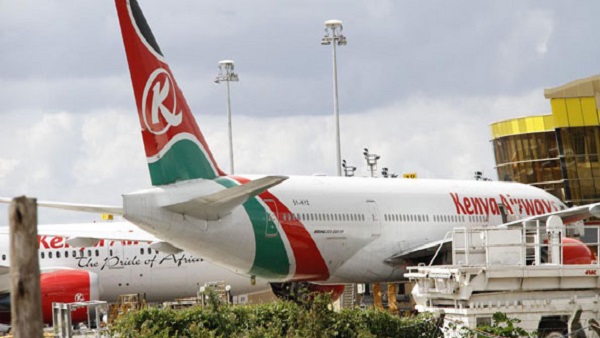Kenya is limiting the issuing of new licences for global airlines seeking to exploit the strategic Nairobi hub in a protectionist move aimed at reviving the dwindling fortunes of national carrier Kenya Airways.
The policy shift is already being applied after the government hastily withdrew a licence that had been granted to Emirates Airline to operate a third daily flight on the Dubai-Nairobi route, which would have increased its frequency between the two cities to 21 a week.
The government has also put on hold licence applications from at least 35 airlines, most of which are seeking approvals to either increase their frequency to Nairobi or switch to larger aircraft to increase capacity.
“Emirates can confirm that the approval granted to operate a third daily flight between Dubai and Nairobi has been withdrawn by the Kenyan transport authorities,” the airline said in a statement recently.
The statement added that the withdrawal of the licence was surprising because there is a valid Bilateral Air Services Agreement (BASA) between Kenya and United Arab Emirates, which allows the airline to operate flights to Nairobi’s Jomo Kenyatta International Airport without any restrictions.
But speaking to The EastAfrican, Kenya’s Transport Ministry Principal Secretary Irungu Nyakera said the withdrawal of the licence is part of the government’s plans to protect the Nairobi hub strategically for KQ, which despite being a private company is Kenya’s national carrier. He said that the government informed the UAE of its intentions to review the existing BASA.
“We need to protect the Nairobi hub specifically for KQ. Increasing the frequency of other airlines to the Nairobi hub is only hurting the national carrier,” he said.
He added that Kenya is not reinventing the wheel — considering that Gulf airlines specifically Emirates, Etihad and Qatar Airways — have achieved phenomenal growth due to protectionism and subsidies by their governments.
According to Mr Irungu, the fact that KQ cannot compete with the highly subsidised Gulf airlines and state-owned Ethiopia Airlines in terms of pricing, has forced a rethink on allowing more foreign airlines into the Kenyan airspace.
In 2015, a report by top US airlines accused the three Gulf airlines of receiving subsidies from their governments amounting to $42 billion.
The report says that the three carriers had benefited unfairly from huge interest-free loans, subsidised airport charges, government protection on fuel losses and below-market labour costs.
European Union
“Kenya is doing what the US and the European Union are doing, limiting the frequency of Middle East carriers because they have realised they are killing their own airlines, leading to job losses,” said Mr Irungu.
The fact that KQ is losing out to Gulf airlines on some of its key routes became evident after the airline recorded a 15.6 per cent plunge in capacity on the Middle East and Far East routes with passenger traffic declining by 6.8 per cent to close the third quarter ending December 2016 at 138,700 passengers.
The airline attributed the decline to its decision to deploy the Boeing 787-8 and Boeing 737-800 aircraft on the routes as opposed to the Boeing 777-300, which has a higher capacity.
Kenya has invested massively in the expansion and upgrading of JKIA, which has seen Nairobi emerge as a premier aviation hub connecting Africa with Europe, the Middle East, Asia and the Far East.
Due to its strategic location, coupled with the fact that KQ has been tottering on the brink of insolvency, several global airlines have been seeking not only to fly to Nairobi but also to increase their frequency to exploit KQ’s downturn.
The ease with which the government had hitherto granted new licences is cited as one of the reasons for KQ’s misfortunes, having lost dominance in key destinations like West Africa and the Far East mainly to Middle East carriers, Turkish and Ethiopian airlines.
The situation has been exacerbated by the fact that in East Africa, it is only Kenya Airways that can compete at the global level.
Rwanda is still building RwandAir — its national carrier — and Tanzania’s Air Tanzania is struggling to take off while Uganda continues to be indecisive over the revival of Uganda Airlines.
According to OAG, a UK-based air travel intelligence firm, Gulf airlines dominate the Africa-Middle East route, accounting for 60 per cent share of seat capacity. Emirates has the biggest share at 20 per cent.
African airlines — mainly KQ, Ethiopian Airlines, and South African Airlines, excluding Egypt Air — account for a mere 10 per cent share of the route.
Source: theeastafrican


